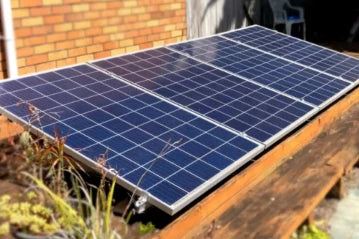
Solar energy is rapidly gaining popularity as a clean and sustainable source of power. As customers explore the possibilities of harnessing solar energy through solar panels, it is essential to understand the fundamental components that make up a solar panel system. In this article, we will delve into the differences between two key concepts: string and array.
What is a String of Solar Panels?
A string in the context of solar panels refers to a series connection of multiple solar panels. Think of it as a daisy chain, where the positive terminal of one panel is connected to the negative terminal of the next panel, forming a continuous chain. This arrangement allows the electricity generated by each panel to flow through the entire string, resulting in a cumulative voltage output.
Strings are the building blocks of a solar panel system, and their configuration plays a crucial role in overall performance. When multiple strings are combined, they form an array, which we will explore in more detail shortly.
What is an Array in Solar Panels?
An array is a collection or grouping of multiple strings. Arrays are formed by connecting multiple strings of solar panels in parallel, meaning that the positive terminals of all the strings are connected together, as are the negative terminals. This parallel connection allows for an increased current output, thereby enhancing the overall power production of the solar panel system.
Arrays are commonly used in larger solar installations, such as commercial or utility-scale projects. By combining multiple strings in parallel, arrays can meet the energy demand of larger applications more effectively.
The Significance of String Sizing
String sizing is a critical aspect of solar panel system design. Properly sizing the string, in terms of the number of panels connected, ensures optimal performance and efficiency. If a string consists of too few panels, the voltage output may be insufficient to meet the requirements of the system's inverter. On the other hand, if a string is too large, the voltage might exceed the inverter's capacity, leading to system malfunctions or reduced energy production.
To determine the maximum size of a solar panel string, installers often rely on a solar panel string calculator. This tool takes into account various factors such as panel specifications, inverter ratings, temperature coefficients, and electrical characteristics of the installation site. By inputting these parameters, the calculator generates the recommended string size that will yield the best performance and comply with the system's electrical requirements.
Utilizing the Solar Panel String Calculator
The solar panel string calculator is a valuable resource that simplifies the design and installation process. By leveraging the calculator, installers can ensure that the solar panel system is configured optimally, maximizing energy production and minimizing any operational issues.
The calculator takes into account key factors such as panel specifications, including their wattage, voltage, and current ratings. It also considers the inverter's specifications, including its maximum input voltage and current. Additionally, the calculator factors in the temperature coefficients of the panels, as temperature variations can affect their performance.
Once all the relevant parameters are entered into the calculator, it generates the recommended string size. This recommendation helps installers determine the optimal number of panels to connect in each string, ensuring that the voltage output aligns with the requirements of the system's inverter.
The Role of Solar Panel String Voltage
String voltage is another critical aspect to consider when configuring a solar panel system. The voltage output of a solar panel string is the cumulative result of the individual panel voltages within it. It is crucial to ensure that the string voltage falls within the range accepted by the inverter.
Inverters are designed to operate within specific voltage limits, and exceeding these limits can have detrimental effects on the system. Therefore, string voltage must be carefully calculated to ensure compatibility with the chosen inverter model.
String voltage also affects other components in the solar panel system. Wiring and circuit breakers need to be appropriately sized to handle the voltage levels produced by the string. Additionally, optimizing the string voltage ensures that the system operates at its maximum power point, maximizing energy production and optimizing the return on investment.
Conclusion
Understanding the difference between string and array in solar panels is crucial for customers looking to harness solar energy effectively. Strings and arrays form the backbone of a solar panel system, allowing for efficient power generation. Proper string sizing, utilizing tools like the solar panel string calculator, ensures optimal performance and avoids operational issues. Additionally, considering the string voltage helps maintain compatibility with the chosen inverter and maximizes energy production. By familiarizing themselves with these concepts, customers can make informed decisions and embark on their solar energy journey with confidence. Embracing solar panels enables us to tap into the immense power of the sun while contributing to a cleaner and more sustainable future.


0 comments